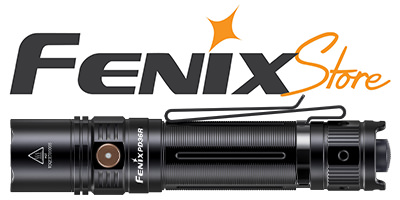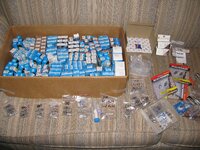You are using an out of date browser. It may not display this or other websites correctly.
You should upgrade or use an alternative browser.
You should upgrade or use an alternative browser.
Why do LED lights still suck and why do I still use incans or HIDs, your opinions or disagreements please.
- Thread starter ampdude
- Start date
 Help Support Candle Power Flashlight Forum
Help Support Candle Power Flashlight Forum
Don't worry. I still know the true value of incans.Okay, who is this guy and why did he take over Lux's account?
Megalamuffin
Enlightened
Even the best high cri emitters like the 219b/519a still don't have the lively glow a bulb has. Not that they're bad at all but it's not quite the same.
We're living in a good time. Incans can be used when desired and excellent LED's are available when their advantages are needed. Oftentimes I carry an led and a bulb light simultaneously.
We're living in a good time. Incans can be used when desired and excellent LED's are available when their advantages are needed. Oftentimes I carry an led and a bulb light simultaneously.
OK, the real question Lux is..........Do you still have your N30?
He should! Mine still works...OK, the real question Lux is..........Do you still have your N30?
importculture
Newly Enlightened
Couldn't have said it better myself! Corporations are brilliant at making money. At one point in time Dole were using pineapple cores slicing them and flavoring them with mango juice and selling them as dried mango. Turning a profit on seemingly throwaway items is ingenious.Because the LED manufacturers sell rejects (LEDs which didn't meet the color or lumen specs) really cheap, given that the only other alternative is to throw them away. Cost sensitive manufacturers making commodity products use these rejects in their products. Same thing with chips. You might have a voltage regulator which fails to meet a 5% voltage tolerance spec. It's still otherwise functional, so it gets sold for non-critical applications at 1/10th the normal price.
Alot of these products you see on AliExpress which sell for less than it would cost to buy the parts are likely using parts which fell short of data sheet specs, but are otherwise functional.
idleprocess
Flashaholic
You just described semiconductor binning.Because the LED manufacturers sell rejects (LEDs which didn't meet the color or lumen specs) really cheap, given that the only other alternative is to throw them away. Cost sensitive manufacturers making commodity products use these rejects in their products.
While I've not really kept up with availability of specific bins since the original Luxeon days, nothing has lead me to believe that the basic processes at play then have fundamentally changed in 20 years. The tightest binning along the ideal CCT curve with the highest color quality is harder to produce thus 'off spec' parts end up being a large percentage - if not most - of the yield. And technically speaking these undesirable parts - i.e. high CCT angry blue, low color quality - are the most efficient in terms of LPW and adequate for many applications ... including the low-end flashlights we see at many a megalomart, home despot, gas station, etc. They're also subjectively perceived to be brighter than lower CCT sources.
What seemingly has changed over 20 years is that yields of 'on spec' parts are up and thus the premium for tight binning with good color quality is considerably lower and availability far easier, as witnessed by ≥90 CRI being readily available almost everywhere. And this has mercifully translated to availability from flashlight makers catering to the enthusiast market.
Way to go Lips!
JustAnOldFashionedLEDGuy
Enlightened
- Joined
- Apr 13, 2020
- Messages
- 336
Well it is not 2006 or 2007 any more.I remember back around 2006 or 2007 I had some early cool tinted LED lights that were all the rage. I was looking at something at a distance and I could not figure out what it was for quite awhile. I didn't want to get closer. Then I took out my E2e and turned it on and could instantly recognize it. That's why LED's are silly to me and I still EDC xenon incans.
Righhhht. Maglights did/do have a somewhat tight beam, but they have so little light output. Any good thrower will do this in spades, and frankly, even a $10-20 Home Depot light will and probably will be adjustable to book.A 2C and 2D Maglite I had back then could hit up the addresses I was looking at from the street back in 2004 and 2005 doing pizza delivery. No LED light had, or still have can do that.
You are right. No incan can come close to touching the color gamut of a 4000K/90CRI LED. Sure the incan is good for bricks and dirt, and if you like dirt colored grass, but if you want to get a good idea of the color of a wide range of objects and have good contrast for a wide range of objects, incan sort of sucks especially if the batteries are anything but new.I understand your opinion and have used many high CRI LED lights.. it's just not the same thing.
I mean..
I find it hilarious that people pretend so much.. 95CRI lights are not the same as a xenon lamp or an HID. It's so ridiculous to me.
Digital has been better for a while now. More resolution. Far less noise. More accurate colors in addition to everything else. Hate to break it to you, but what comes out of an audio DAC is analog, but without the noise, distortion, innate compression, wow, flutter, and inaccurate freqeuency response etc. of vinyl or tape.To me the dgital camera aint as good as film, nor is digital music as good as analog but they're so dang convenient. Same with LED vs a lightbulb.
JustAnOldFashionedLEDGuy
Enlightened
- Joined
- Apr 13, 2020
- Messages
- 336
2700 for "incan", 3000 for halogen, and perhaps as high as 3200 hot-rodded. Anything higher would be using filtered glass.I'd recommend a dedomed 519A, probably a 3500K would be closest to an incan.
JustAnOldFashionedLEDGuy
Enlightened
- Joined
- Apr 13, 2020
- Messages
- 336
Because the LED manufacturers sell rejects (LEDs which didn't meet the color or lumen specs) really cheap, given that the only other alternative is to throw them away. Cost sensitive manufacturers making commodity products use these rejects in their products.
No, those cheap flashlights are using cheap LEDs with poor MFG tolerance. Top tier LED suppliers hit comparatively tight tolerances today without much issue.
No, because they get tested at a wafer / die level and wouldn't even make the expensive packaging stage. A vendor may have A, B, C grades, but all within stated specs. The amount that will yield outside will be small and be discarded.You might have a voltage regulator which fails to meet a 5% voltage tolerance spec. It's still otherwise functional, so it gets sold for non-critical applications at 1/10th the normal price.
Chinese LEDs are dirt cheap, and all the rest of the parts are within spec and from China where you can get quite cheap analog chips and FETs/BJTs.Alot of these products you see on AliExpress which sell for less than it would cost to buy the parts are likely using parts which fell short of data sheet specs, but are otherwise functional.
You are right. No incan can come close to touching the color gamut of a 4000K/90CRI LED. Sure the incan is good for bricks and dirt, and if you like dirt colored grass, but if you want to get a good idea of the color of a wide range of objects and have good contrast for a wide range of objects, incan sort of sucks especially if the batteries are anything but new.
2700 for "incan", 3000 for halogen, and perhaps as high as 3200 hot-rodded. Anything higher would be using filtered glass.
I agree that incans suck if the batteries are going dead or just plain suck. Incans need to be well driven to get the spectrum that helps me see the best. Companies that drive incans to the limit with xenon-halogen are what really got me into flashlights a long time ago. I'm not sure about the spectrum you mention, but I always felt like the LED's I had rated around 3500K were the closest to what I like in a xenon-halogen lamp assembly.
JustAnOldFashionedLEDGuy
Enlightened
- Joined
- Apr 13, 2020
- Messages
- 336
Even the best high cri emitters like the 219b/519a still don't have the lively glow a bulb has. Not that they're bad at all but it's not quite the same.
We're living in a good time. Incans can be used when desired and excellent LED's are available when their advantages are needed. Oftentimes I carry an led and a bulb light simultaneously.
You mean the lively glow at 1 particular battery voltage which lasts maybe 3 or 4 minutes of the total battery life?
JustAnOldFashionedLEDGuy
Enlightened
- Joined
- Apr 13, 2020
- Messages
- 336
What seemingly has changed over 20 years is that yields of 'on spec' parts are up and thus the premium for tight binning with good color quality is considerably lower and availability far easier, as witnessed by ≥90 CRI being readily available almost everywhere. And this has mercifully translated to availability from flashlight makers catering to the enthusiast market.
The processes for applying the phosphor have improved. The processes for mfg the die have improved meaning more consistency of the blue pump. The phosphors have improved. The testing of die prior to phosphor and packaging has improved.
90CRI is a different phosphor. It is available now because LED efficiency is high enough that pushing the most lumens is not 99% of the market any more.
2700 for "incan", 3000 for halogen, and perhaps as high as 3200 hot-rodded. Anything higher would be using filtered glass.
Perhaps my wording wasn't the best, I was recommending a dedomed 3500K, which would make it in that range.
Don't worry about your wording defloyd, some folks would argue with a stump.
Megalamuffin
Enlightened
You mean the lively glow at 1 particular battery voltage which lasts maybe 3 or 4 minutes of the total battery life?
Not quite. Bulbs just have a certain glow that makes it look "alive" compared to an led.
There are plenty of good battery and bulb combinations that give you nice regulated output with good color temperature for the majority of the battery life. No reason at all to use alkalines that give awful performance.
Last edited:
idleprocess
Flashaholic
Indeed things have changed, such is the nature of improvements. However there's still the element of statistical process control and the slight elements of chance introduced within the margins of control charts, thus parts that are better or worse (usually worse) than desired.The processes for applying the phosphor have improved. The processes for mfg the die have improved meaning more consistency of the blue pump. The phosphors have improved. The testing of die prior to phosphor and packaging has improved.
90CRI is a different phosphor. It is available now because LED efficiency is high enough that pushing the most lumens is not 99% of the market any more.
jtr1962
Flashaholic
I'm not even necessarily talking about products with LEDs. Rather, there's stuff like this:Chinese LEDs are dirt cheap, and all the rest of the parts are within spec and from China where you can get quite cheap analog chips and FETs/BJTs.
or this:
The ADS1256 costs well over $7 if you buy full reels, yet they're selling a completed board with it and other chips (including an ADR03 voltage reference which goes for about $1.50 in large quantities) for $13.40. Even in large quantities I probably couldn't have that board made for what they're selling it for (and presumably making a profit on).
The second item uses the MCP3421 which sells for north of $2 if you buy multiple reels. So they're selling a completed board using it for less than it would cost to buy the chip itself in large quantities.
I know they test chips at wafer level before going to package them. That doesn't mean some which pass at wafer level don't fail once packaged. In any case these are far from the only examples. I bought 5 of these for about $8 each:
The parts alone purchased in quantity add up to more than I paid.
Either the Chinese are getting really good at making counterfeit chips which perform nearly as well as the real thing, or these are rejects being sold for a fraction of normal prices.
aznsx
Flashlight Enthusiast
....., and lose!!!!!some folks would argue with a stump
Similar threads
Latest posts
-
-
-
More EV fires after salt water flooding
- Latest: mrfixitman
-
-


